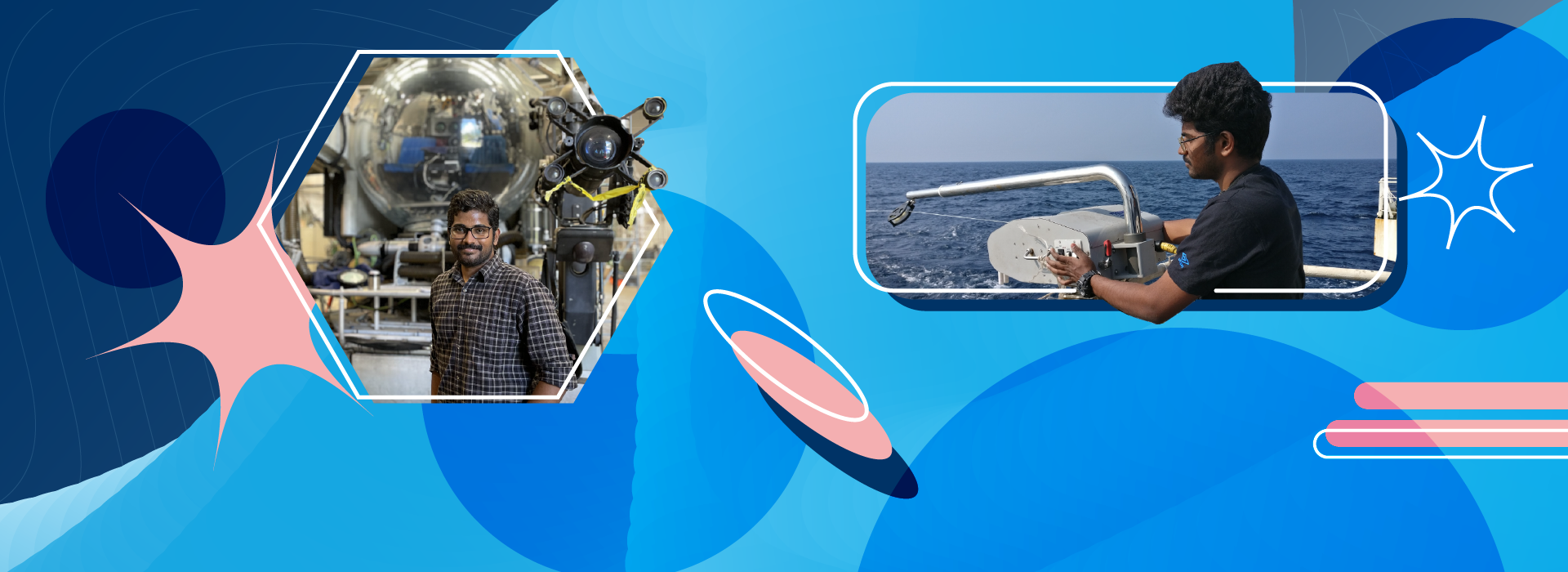09/30/2021
Postdoc Spotlight: Imaging the Blue Expanse
Postdoctoral Fellow Analyzes Satellite Images to Understand Our Waters
By Paige Russo
As a postdoctoral fellow at FAU’s Harbor Branch Oceanographic Institute, Srinivas Kolluru, Ph.D., examines photographs of water, such as satellite imagery, to understand more about water quality and to improve the algorithms to obtain water quality parameters from these images.
Born in India, Kolluru said he developed a love for science fiction novels that sparked his interest in the ocean and what lives in it. One of his favorite books is “Deception Point,” which discusses the minute details of bioluminescent plankton found under an iceberg. “By reading the books and seeing the science fiction movies, I believe that creativity, problem-solving and global views are important,” Kolluru said. “Similar to how authors describe environments in minute detail, in research, those details matter a lot and visualization of different perspectives are crucial.”
Kolluru earned his bachelor’s degree in technology in civil engineering in 2014 and master’s in 2016 at the National Institute of Technology Karnataka and Indian National Centre for Ocean Information Services. For his research thesis, he studied complex estuaries in the Ganges and Indus River and used hyperspectral remote sensing, a type of imaging that collects hundreds of images at different wavelengths for the same area. These images are used to differentiate elements in the water, like suspended sediments, dissolved organic matter and phytoplankton, otherwise known as algae. By studying the patterns of the water quality parameters in the area, Kolluru said he could determine if harmful substances were present in the water, which could affect drinking water or the air around it. “Knowing the quality of our waters is very important for people and our ecosystems,” he said.
While completing his doctorate degree at the Indian Institute of Technology Bombay, Kolluru took several cruises in the Arabian sea. He collected water samples from different depths of the ocean to test water quality. “It was a different view of the world being out at sea,” he said. His dissertation research involved developing algorithms and implementation of machine learning methods to improve the accuracy of the derived water quality parameters using satellite imagery.
In 2018, Kolluru attended a summer school held by International Ocean Color Coordinating Group in France. This is where met his current postdoc mentor, Mike Twardowski, Ph.D., principal investigator, and research professor at FAU’s Harbor Branch, and the two discussed projects using hyperspectral imaging.
Kolluru joined FAU’s Harbor Branch as a postdoctoral fellow in 2021, where his focus is to improve the algorithms of remote sensing data from satellite imagery, continued. Once the algorithms for water quality are improved, Kolluru and Twardowski’s team will examine where these substances in the water are distributed. “The presence of various substances spatially and their quantity are crucial, it is necessary to improve the accuracy of the derived water quality parameters and study the patterns for various reasons,” Kolluru said. “For example, an increase in suspended sediment concentration in the water body increases the turbidity [cloudiness in the water], thereby decreasing the light reaching the bottom to help seagrass grow.”
Harbor Branch team will start using images collected by Plankton Aerosol Cloud Ecosystem satellites launched by NASA to start collecting global ocean color imagery, according to Kolluru. The ocean color helps scientists, like Kolluru, determine what types of sediments and phytoplankton are in the water, because each species of phytoplankton gives off different pigments of color that can range anywhere between red and green. “We plan to use high-resolution satellite imagery that allows us to study and observe the patterns of blooms and their frequency,” he said.
Kolluru said his next step is to analyze the images of the Indian River Lagoon specifically. “There are many complex optical ecosystems in the Indian River Lagoon,” Kolluru said. “It is dynamic in the sense that you can see different types of blooms and different colors of the water. A lot of people should join this field to improve our understanding of the climate and our oceans because that is where people and businesses become affected as well.”
If you would like more information, please contact us at dorcommunications@fau.edu.
